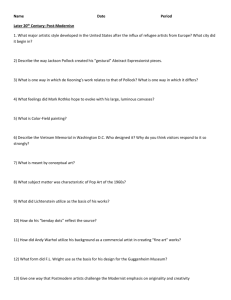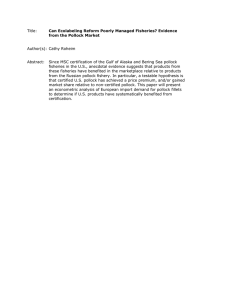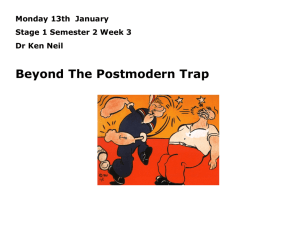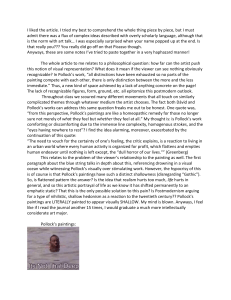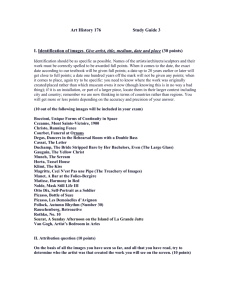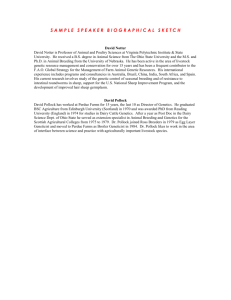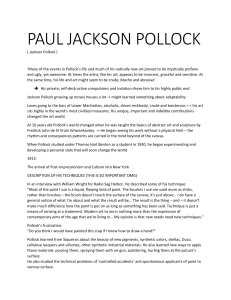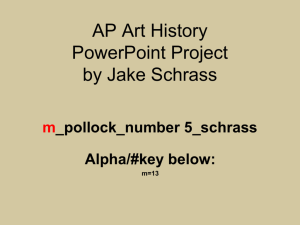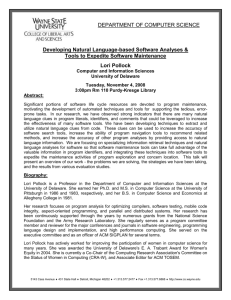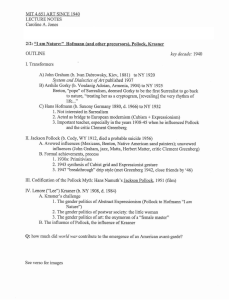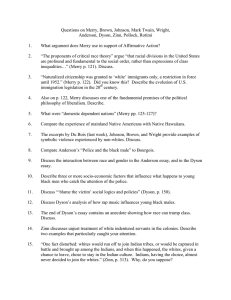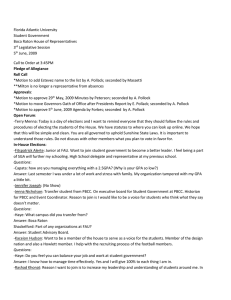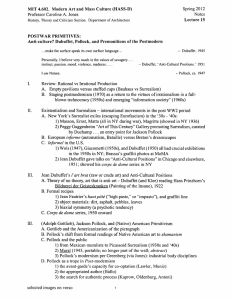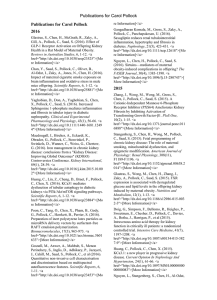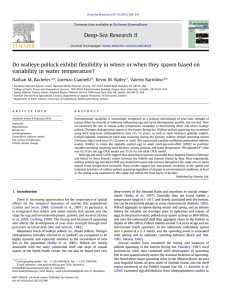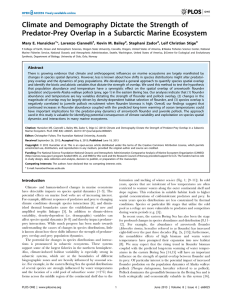Document 13090950
advertisement
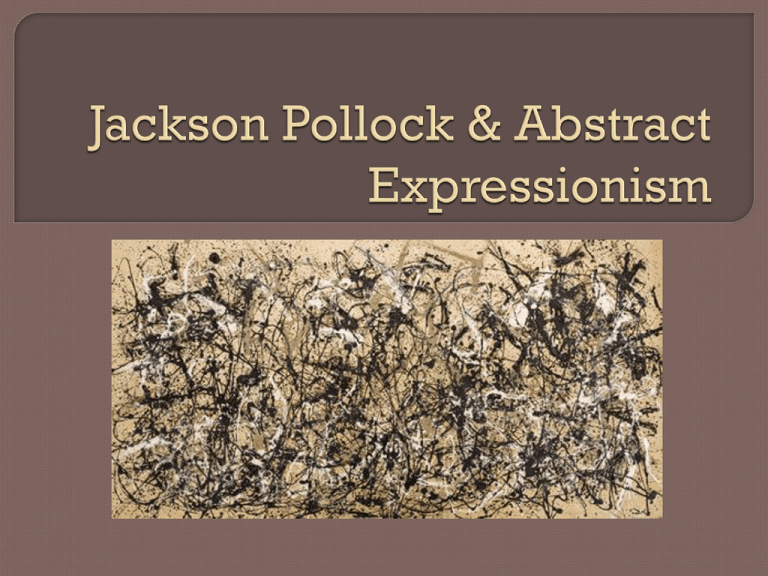
Many artists started working in the 1930s under the New Deal’s WPA (Works Progress Administration) . New York. Spontaneity, improvisation, and process. Emphasis on dynamic, energetic gesture versus reflective, cerebral focus on more open fields of colour. Troubled by man's dark side and anxiously aware of human irrationality and vulnerability. Dissatisfied with artists movements of Regionalism and Social Realism. Influence from European artists such as Picasso and Matisse. Above – Henri Matisse ‘The Moroccans’ 1915 Right – Jackson Pollock ‘Easter and the Totem’ 1953 Above left – Pablo Picasso, Girl Before a Mirror, 1932 Above right – Jackson Pollock, The Moon-Woman cuts the circle, 1943 "To us, art is an adventure into an unknown world of the imagination which is fancy-free and violently opposed to common sense. There is no such thing as a good painting about nothing. We assert that the subject is critical." Mark Rothko, Adolph Gottlieb, and Barnett Newman’s letter to New York Times, June 1943. “Abstract painting is abstract. It confronts you. There was a reviewer a while back who wrote that my pictures didn’t have any beginning or any end. He didn’t mean it as a compliment, but it was. It was a fine compliment, only he didn’t know it” Jackson Pollock, The New Yorker 1950. “Modern art to me is nothing more than the expression of contemporary aims of the age that we’re living in…my opinion is that new needs new techniques. And the modern artists have found new ways and new means of making their statements. It seems to me that the modern painter cannot express this age, the airplane, the atom bomb, the radio, in the old forms of the Renaissance or of any other past culture. Each age finds its own technique” “Very vibrant, very alive, very exciting” •Born in Cody, Wyoming January 28, 1912 and grew up in Arizona and California. The Pollock family would make 8 moves in 14 years. • Enrolled in Los Angeles Manual Arts High School, expelled 1928 for being caught with Journal of Liberty, a manifesto written by some of the students criticising the faculty and the school athletes. •Move to New York 1930 and studied under Thomas Benton at the Art Student’s League. •1935-43 Pollock was employed by the WPA. Contributed towards a mural for the hospital on Roosevelt Island. Had one watercolour exhibited in the Federal Art Project’s gallery 1937. •In 1936 he began seeking therapeutic treatments for alcoholism especially the Jungian (Carl Jung) branch of psychoanalysis. •Born in New York, 1908 to Russian-Jewish immigrant parents. •Worked in WPA 1935-43 •Studied under cubist painter Hans Hofmann – developed a neo-cubist abstract style. •Showed with other Abstract Expressionists in 1940. •Cut up and collage her work. •Married Pollock in 1945, the same year the couple moved to Springs, Long Island. •Influence on each others work. http://www.youtube.com/watch?v=6cgBvpjwOGo •Childhood •Thomas Benton •Process •Inspiration •By the end of his life he was consumed by his addiction to alcohol. •Lee Krasner had left him – mistress Ruth Kligman •August 11, 1956, at 10:15 pm Pollock and Kligman’s friend - Edith Metzger – died in a car crash. Pollock was driving under the influence. Kligman recovered from her injuries.
